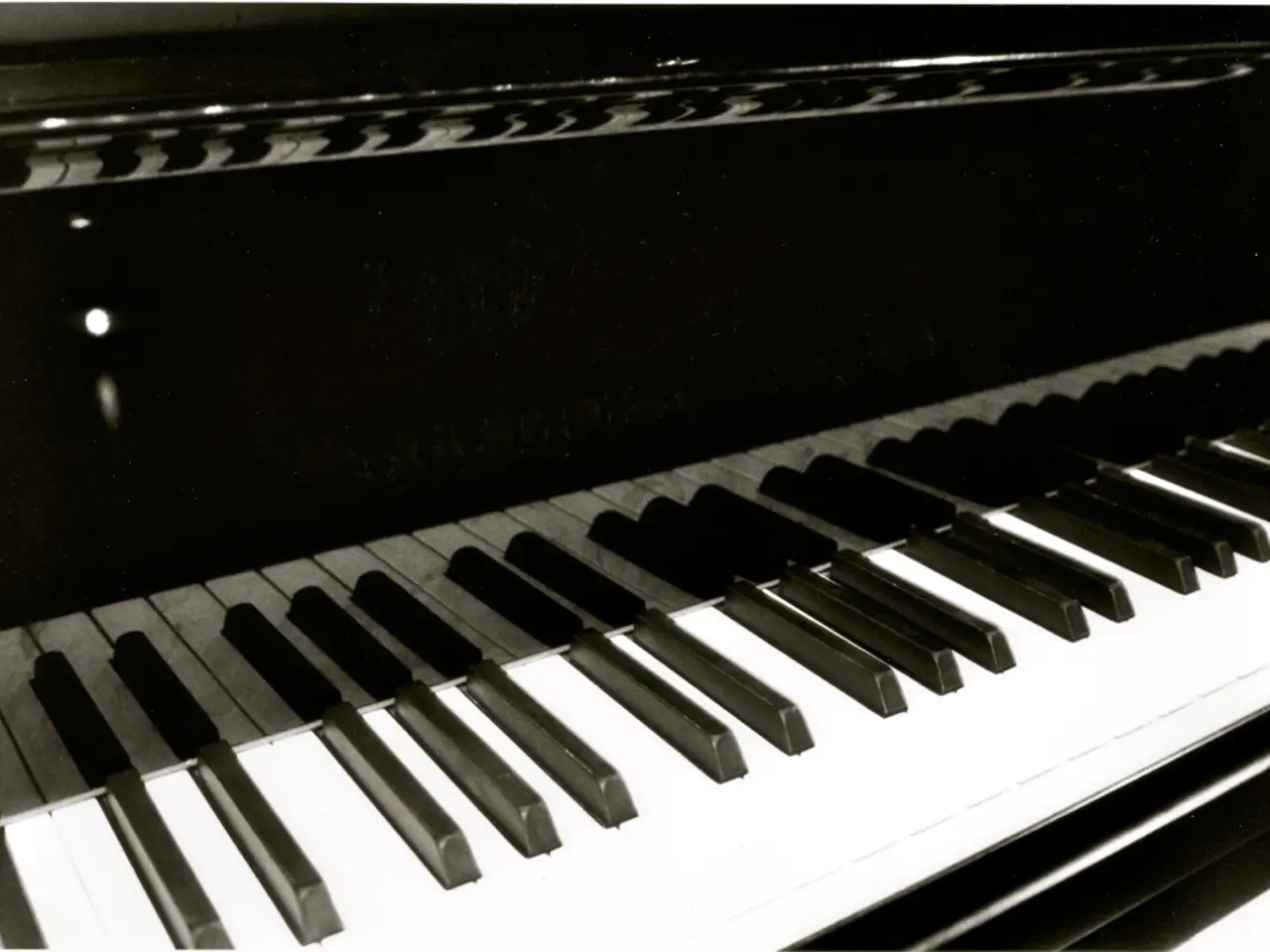Transforming a completely finished composition into a Piano-Centric Melody
In the heart of London, a popular song titled "Answers" was recently rearranged for a live performance, stripping away the full production and leaving only a piano to accompany the melody. This transformation, tagged under #pianolessonslondon, #PianoteachersLondon, #singingteacherslondon, #adultpianolessons, and #compositionlessonslondon, provides an insightful look into the art of rearranging a fully produced piece into a piano ballad.
Preserving the Essence of the Song
To maintain the song's focal points and dynamics, the rearrangement process focuses on identifying and preserving the song's essential elements. The original melody is kept intact, serving as the centrepiece, while key harmonic progressions are retained to preserve the song's emotional core.
Simplifying the Arrangement
Complex textures and layers are simplified to essentials suited for piano, usually chords and melody. Richness is conveyed through piano techniques like arpeggios, broken chords, and subtle rhythmic variations in the left hand.
Supporting Dynamics and Rhythm
Left-hand patterns play a crucial role in supporting dynamics and rhythm. For instance, alternating between bass notes and full chords or breaking chords into arpeggios can mimic the original rhythm and maintain momentum without overpowering the melody.
Employing Dynamic Range
Dynamic range on the piano is employed to replicate the build-ups and fade-outs of the original arrangement. Varying touch, pedal use, and voicing (how notes are balanced in chords) ensure crescendos and decrescendos carry emotional impact.
Creating Smooth Transitions
Smooth transitions and phrasing are created using phrasing, rubato (flexible tempo), and pedal to connect sections naturally, mirroring the original song’s flow without adding clutter.
Stylistic Approaches
Stylistic approaches, such as jazz-influenced comping or block chords, can add harmonic interest and subtle rhythmic complexity while supporting the melody.
A Surprise in the Rearrangement
A surprise was introduced in the rearrangement, but the specific details were not provided. The fast, semiquaver passage in the left hand was added to maintain tension without being too obvious.
Incorporating Familiar Rhythms
Syncopated phrases were added to create a pizzicato sensation, as a substitute for the missing string part. A rhythm from "This is me" from "The Greatest Showman" was incorporated from bar 25 to add tension to the background as the chorus approached.
Maintaining Signature Passages
The rearrangement aimed to maintain the signature passages and features of the main production, while creating harmonic tension and texture. The song's chord progression consists of four chords: Gmin, Amaj, Bmin, Dmaj.
Collaboration and Future Plans
The rearrangement was a collaborative effort, with Carolina Aguirre Anderson, a talented pianist and friend, lending her expertise. The composer is considering turning the rearranged song into a piano piece in the future.
For those interested in learning more about arranging and composing songs, Juan Rezzuto's "Composition insight" may be a valuable resource. You can find his article here.
[1] Rearranging Piano Ballads: A Step-by-Step Guide
[2] The Art of Piano Arranging
[3] Jazz-Influenced Piano Arranging Techniques
[4] Creating Smooth Transitions in Piano Arrangements
The composer collaborated with Carolina Aguirre Anderson, a talented pianist and friend, to rearrange a popular song titled "Answers" into a piano ballad. This rearrangement, done in the style of a jazz-influenced piano ballad, is not only a display of entertainment but also a showcase of the art of music composition.








